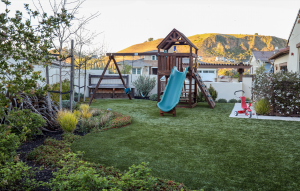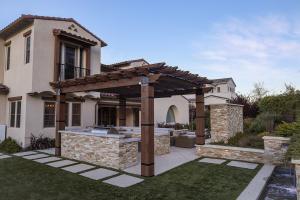
Montgomery Robbins, Inc. Integrates Feng Shui Principles into Landscape Architecture to Enhance Outdoor Living Spaces
Montgomery Robbins, Inc. Integrates Feng Shui Principles into Landscape Architecture to Enhance Outdoor Living Spaces
Often associated with interior design, Feng Shui—translated as "Wind-Water"—recognizes eight magnetic directions, each connected with specific elements and themes. These directional zones can be used to promote the movement of Qi (or Chi), a life-enhancing energy, through both homes and gardens.
“We’re not Feng Shui masters,” says John Montgomery, Founding Landscape Architect at Montgomery Robbins, “but we’ve found joy in applying some of its principles in landscapes, especially when clients are looking for spaces that feel intentional, balanced, and personalized. Many of the principals coincide with our companies own design desires.”
Using Compass School Feng Shui techniques, the design process begins by establishing a central point on the property and identifying the eight directional zones—North, Northeast, East, Southeast, South, Southwest, West, and Northwest. Each area corresponds with specific energies and can be enhanced using natural elements, colors, or spatial functions. For example, a children’s play area might be best placed in the west sector, linked to creativity and youth, while a spiritual nook or meditation bench might naturally fit in the northeast.
Even outside of strict directional alignments, key Feng Shui design principles—like the symbolism of doors and gates as portals for energy—are being thoughtfully incorporated. Design strategies may include softening hard lines with vining florals, using grasses to introduce movement and fluidity, or integrating strong sculptural elements like tiered planters to provide grounded energy where needed.
As more homeowners seek to transform their backyards into intentional living spaces, Montgomery Robbins encourages exploration and curiosity. “Feng Shui offers a creative framework for enhancing connection—not just with nature, but with our homes and ourselves,” John adds. “It’s not about perfection, but about trying something new and seeing what resonates.”
Debbie Blumhardt
Montgomery Robbins, Inc.
+1 925-820-8884
hello@montgomeryrobbins.com
Visit us on social media:
LinkedIn
Instagram
Other
Distribution channels: Building & Construction Industry, Consumer Goods, Culture, Society & Lifestyle, Real Estate & Property Management, Sports, Fitness & Recreation
Legal Disclaimer:
EIN Presswire provides this news content "as is" without warranty of any kind. We do not accept any responsibility or liability for the accuracy, content, images, videos, licenses, completeness, legality, or reliability of the information contained in this article. If you have any complaints or copyright issues related to this article, kindly contact the author above.
Submit your press release


